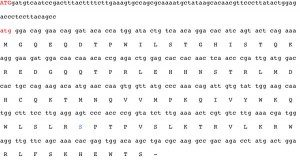

Thank you for the nice vignette about the ScienceInsider interview. I would like to point out that full genome sequences of Mexican viruses have been available in the public domain at the GISAID database http://www.gisaid.org since April 24, 2009. Sequences were posted in the public domain as soon as they were completed and curated. The availability of sequences at GISAID was also posted at the WHO website (pdf)
I thank Dr. Donis for clarifying this situation. Clearly I and many readers of virology blog had missed the original WHO statement, and unfortunately we took the lack of sequence information as a sign of greed or evil intent. My apologies to all who were offended.
GISAID is the Global Initiative on Sharing Influenza Data, established in 2006 to help sharing data on influenza virus:
Several countries and international agencies have recently taken steps to improve sharing of influenza data following the initiative of leading veterinary virologists in the field of avian influenza. However, the current level of collection and sharing of data is inadequate given the magnitude of the threat. We propose to expand and complement existing efforts with the creation of a global consortium €“ the Global Initiative on Sharing Avian Influenza Data (GISAID) €“ that would foster international sharing of avian influenza isolates and data.
Registration is required for access to the site.

Um, how do you spell “waffle”?
I don't have a registration yet to the GISAID, but your ref to the WHO site was for the sequence of a California virus isolate. Not the same thing! What I want to see is the sequences for isolates from Mexico that were lethal.
Thanks so much for the diligence in clearing up this loose end.
Matt
I'm actually running into difficulties with registration. GISAID is still a bit of a 'gate'. The data isn't truly available to the public until they decide to redeposit sequences into the normal databases. To understand, I found this wiki site a nicer summary than their own web site.
http://en.wikipedia.org/wiki/GISAID
It seems there are issues of IP (avoiding patent aps filed using the data by unauthorized entities) and unfortunately priority concerns, ie who gets to publish the paper first.
Um, how do you spell “waffle”?
I don't have a registration yet to the GISAID, but your ref to the WHO site was for the sequence of a California virus isolate. Not the same thing! What I want to see is the sequences for isolates from Mexico that were lethal.
Thanks so much for the diligence in clearing up this loose end.
Matt
I'm actually running into difficulties with registration. GISAID is still a bit of a 'gate'. The data isn't truly available to the public until they decide to redeposit sequences into the normal databases. To understand, I found this wiki site a nicer summary than their own web site.
http://en.wikipedia.org/wiki/GISAID
It seems there are issues of IP (avoiding patent aps filed using the data by unauthorized entities) and unfortunately priority concerns, ie who gets to publish the paper first.